In anticipation of the new year ahead, I’ve pulled together 15 charts that we’ll be watching and might help guide our expectations for what 2015 has in store for us.
A Not-So-Crude Trend
Crude oil has recently dipped below $50 per barrel for the first time since 2009, one of the reasons for which is the rise of oil production in the United States. The glut has already prompted many U.S. companies to halt or limit projects, especially those that make use of hydraulic fracturing, or fracking. With oil prices as low as they are, it’s possible even more companies will join them.
1. 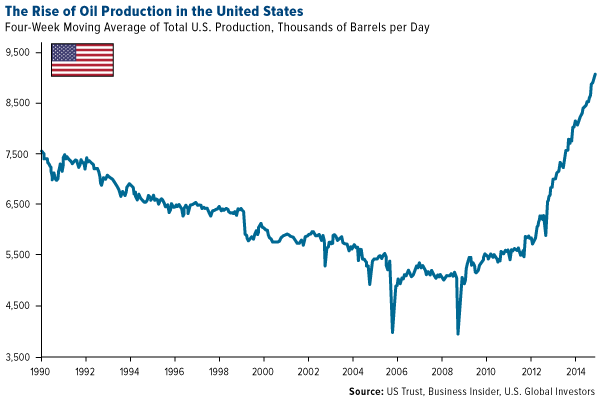
The bright side, however, is that a bottom and subsequent rally might emerge as early as next month, if the 5-, 15- and 30-year trend stays in place.
2. 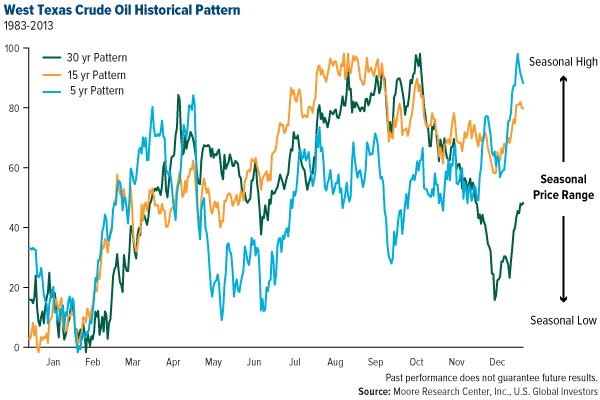
Airline Stocks Taking Off
Low oil prices have certainly hurt companies involved in the exploration and production of oil, but cheap fuel has benefited many companies that consume barrels of the stuff, airlines included. Despite some turbulence, such as the October pullback and pre-election Ebola scares, airline stocks have continued to ascend.
3. 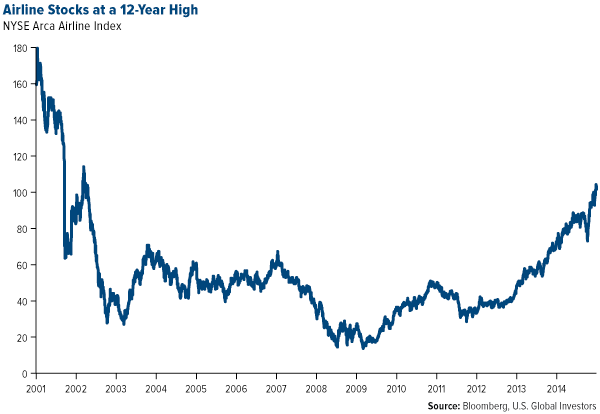
PMI: The Economic Soothsayer
Gross domestic product (GDP) tells you where you’ve been. Only the global manufacturing purchasing manager’s index (PMI) can tell you where you’re headed. Our research shows that when the one-month PMI reading crosses above the three-month moving average, gains have been made in select areas six months afterward:
4. 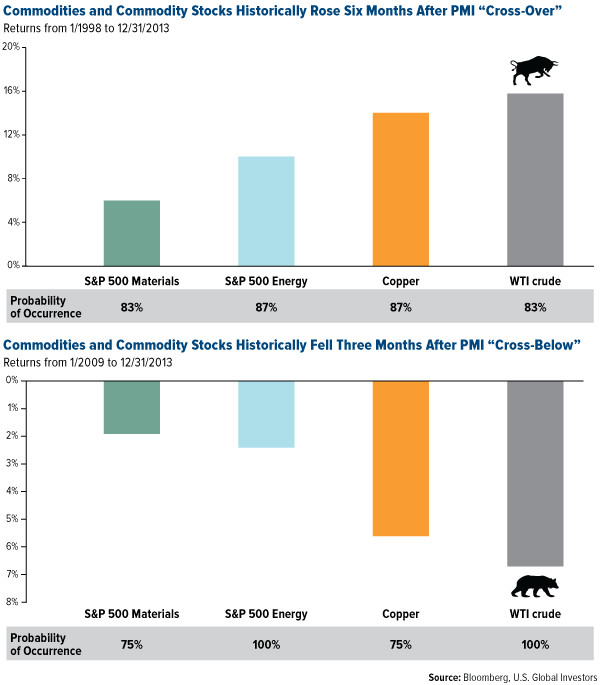
Since September of last year, the global one-month reading has remained below the three-month moving average.
5. 
We’ll be eyeing the global PMI closely this year because when the “cross-above” occurs, it’ll be time to act!
End of One Secular Cycle, Start of Another?
We might be nearing the end of another 30-year-or-so secular market cycle, which is both exciting and a signal for caution. Adjusted for inflation, each of the three cycles—1921-1949, 1949-1982 and 1982-2015—have risen successively in performance.
6. 
This raises more than a few questions, two of which immediately spring to mind: When will this current cycle end? And will the next one follow the trend of even better inflation-adjusted returns?
Ruble Rubble
We all know Russia’s going through tough times. International sanctions, sliding oil prices and a collapsing currency have all contributed to dire economic straits.
7. 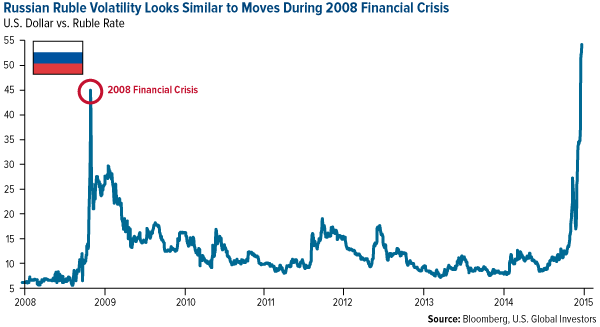
The Federation’s economy is expected to contract by almost 5 percent, and Standard & Poor’s recently announced that it could very well downgrade Russian debt to junk status within the next three months. Whatever your opinion on Russia is, it’s important to acknowledge that ours is a global economy. It would be in our country and company’s best interest for Russia to transform itself into a more attractive place to conduct business.
BRICS of Gold
Many investors are aware that gold is often used as a safe-haven currency. We’re witnessing this fear trade unfold right now in most of the BRICS countries—Brazil, Russia, India, China and South Africa. By year’s end, Russia had snapped up 130 tons of the precious metal, a 73-percent increase from 2013.
Since India eliminated its 80:20 rule in November, which mandated that 20 percent of all imported gold must be exported before any new shipments could be brought in, gold demand has exploded. In South Africa, gold producers are currently leading a stock market rally.
And in China, wholesale gold demand has remained steady as its economy has slowed. Total withdrawals from the Shanghai Gold Exchange came in just shy of the record set in 2013.
8. 
We’ll see if China can sustain its robust demand throughout the next 12 months.
Year of the Bull Market
Speaking of China, its A-Shares have rallied strongly since the summer despite the country’s slowdown. They continue to be undervalued and offer a favorable risk-reward profile.
9. 
The rally in Chinese equities cannot be overstated. Over the past six months, China’s market capitalization has surpassed that of other BRIC countries combined.
10. 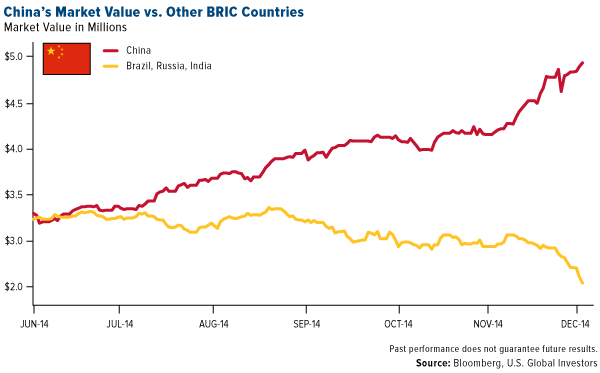
Brightest of the Bunch
Although gold had another down year in 2014, losing 1.7 percent, it still smoked all other major world currencies except for the US dollar, whose mounting strength has put pressure on the yellow metal.
11. 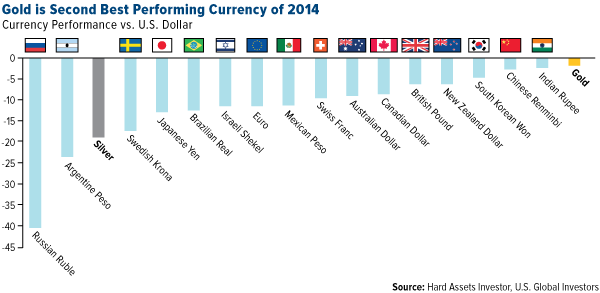
With the global downturn in effect, gold appears likely to remain an attractive investment.
Borrowing for Free
Bad news is often good news for gold: For the first time ever, the German 5-Year and 10-Year bond yields have fallen below zero, indicating unambiguous deflation in the eurozone.
12. 
This means that German bondholders are effectively paying the government to hold on to its debt. As a result, international investors might look elsewhere for better performance—gold, for instance, or the U.S. municipal bond market, which was valued at $3.6 trillion by year’s end.
The S&P 500 Index Paying Dividends
Nearly 85 percent of companies in the S&P 500 currently pay a dividend, with dividends per share (DPS) having grown 11.3 percent in the past 12 months.
13. 
What’s more, FactSet analysts expect DPS to increase over 8 percent in the next 12 months, with the financial and consumer discretionary sectors to report double-digit growth.
Watch the Big Apple
As the U.S.’s largest company by net capitalization, Apple(NASDAQ:AAPL) has had mixed results after launching its flagship devices. When it released the first iPhone back in June 2007, its stock surged 16 percent within the next month. More recently, however, Apple stock tumbled following reports that the iPhone 6 was prone to bending.
Will the Apple Watch, to be released sometime early this year, lead company stock higher? Or will it take a bite out of gains? We’ll have to wait and see, but for now, analysts are already making their product shipment forecasts for 2015.
14. 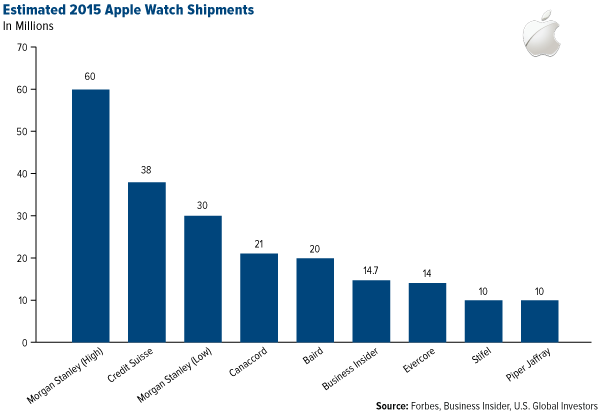
Don’t Fear Rising Rates
15. 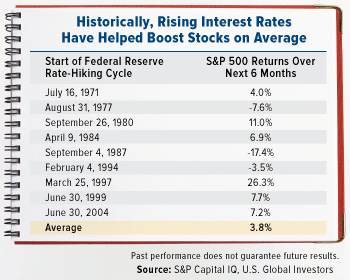
This one remains filed under “considerable time,” as we have no idea when or to what extent the Federal Reserve will decide to raise rates this year. I’ve previously written about how rate increases might affect Treasuries. But what about stocks? Historical precedent, going back to 1971, shows that stocks have on average increased by nearly 4 percent six months following a rate hike.
Disclosure and Disclaimer: Past performance does not guarantee future results.
The J.P. Morgan Global Purchasing Manager’s Index is an indicator of the economic health of the global manufacturing sector. The PMI index is based on five major indicators: new orders, inventory levels, production, supplier deliveries and the employment environment.
The S&P 500 Stock Index is a widely recognized capitalization-weighted index of 500 common stock prices in U.S. companies.
The S&P 500 Materials Index is a capitalization-weighted index that tracks the companies in the material sector as a subset of the S&P 500. The S&P 500 Energy Index is a capitalization-weighted index that tracks the companies in the energy sector as a subset of the S&P 500.
The NYSE Arca Airline Index is an equal dollar weighted index designed to measure the performance of highly capitalized companies in the airline industry. The XAL Index tracks the price performance of major U.S. and overseas airlines.
Shanghai Gold Exchange is a non-profit self-regulatory organization, approved by the State Council, organized by the People's Bank of China, and registered with the State Administration for Industry & Commerce, for the purpose of trading gold, silver, platinum and other precious metals.
BRIC refers to the emerging market countries Brazil, Russia, India and China.
Standard deviation is a measure of the dispersion of a set of data from its mean. The more spread apart the data, the higher the deviation. Standard deviation is also known as historical volatility.
Fund portfolios are actively managed, and holdings may change daily. Holdings are reported as of the most recent quarter-end. The following securities mentioned in the article were held by one or more of U.S. Global Investors Funds as of 9/30/2014: Apple, Facebook.
All opinions expressed and data provided are subject to change without notice. Some of these opinions may not be appropriate to every investor.
